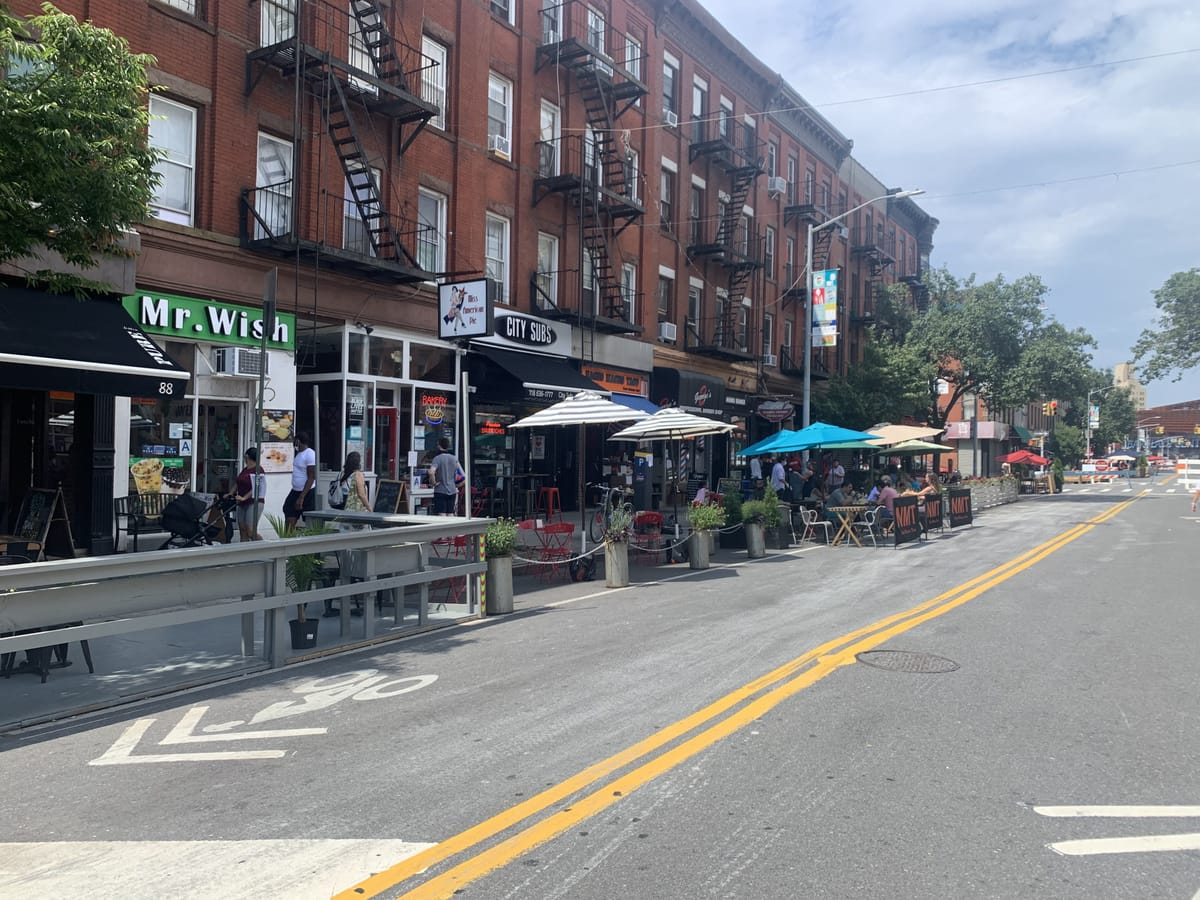Stringer’s Plan To Save Main Street Creates A Vision For A Different Kind Of City

“We need smart public investment and outside-the-box thinking to meet this moment. It’s time for a comprehensive strategy to infuse local economies with aid, provide tax relief to small businesses, cut red tape, and modernize our infrastructure to support New Yorkers working and raising families in our new normal,” New York City Comptroller Scott Stringer said announcing his plan to “Save Main Street” yesterday.
Over 2,800 small businesses have closed since March, with more than 1,200 of those being restaurants, the Comptroller found, and recommends vast changes to the rules and regulations currently in place. The Comptroller’s office says that, while small businesses account for only 18% of the jobs on the market, they’ve made up more than 39% of the job losses in New York City, with small business revenue dropping by a quarter since the beginning of the year.
In order to revitalize high vacancy areas, Stringer hopes to provide incentives to new businesses opening. A comprehensive inventory of the empty storefronts, as well as door-to-door outreach to help existing businesses apply for the remaining PPP loan money, city tax credits, and a proposal to make the cap on third-party delivery apps permanent are just some of the suggestions.
Stringer wrote on Twitter “We need Congress to step up and help Save Main Street,” in an announcement of the plan.
Small businesses are the backbone of our economy. They are the engines of community wealth.
But these businesses have been struggling for years with rising rents, red tape, and changing technology.
We need Congress to step up and help Save Main Street.https://t.co/SYM8cxws6u
— Scott M. Stringer (@NYCComptroller) August 5, 2020
Stringer, who is also considering running for Mayor in 2021, hopes also to increase the resilience and presence of the city’s small businesses.
His plan includes vast changes to urban living as we currently know it, including a more expanded open streets program that would include nail salons, bodegas, clothing stores, and others. He also proposed many miles of shared streets, that would only allow cars to travel at five miles per hour in residential neighborhoods and certain other streets.
In addition to business relief, Stringer hopes to add 100 miles of bus lanes in the next two years, as well as increase bike ridership by 1,000% in the next three through a series of initiatives that include a government-subsidized electric bike program.
The full plan and list of initiatives can be found here.




